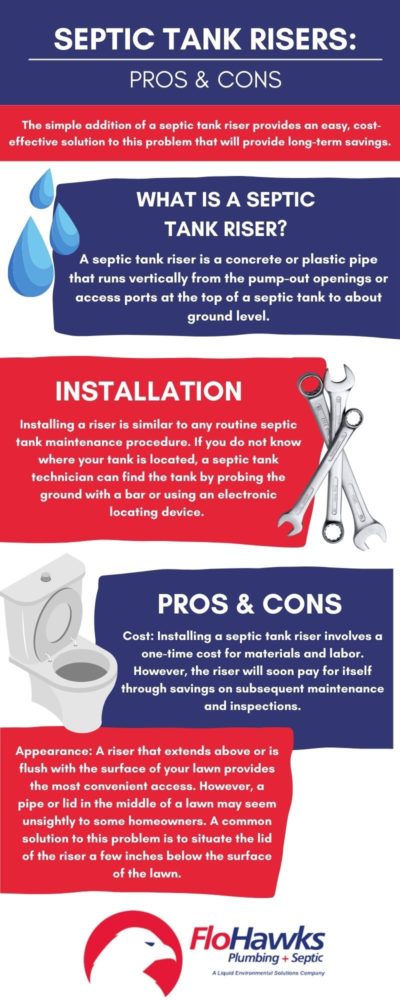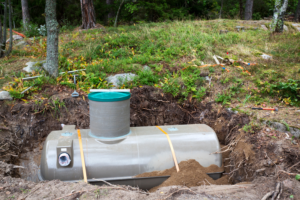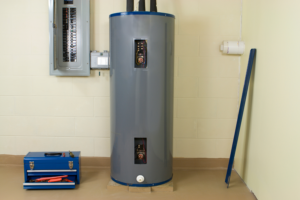Because septic tanks are buried underground, locating and accessing tank lids for inspection and pumping can be a potentially difficult, time-consuming, and costly endeavor. Fortunately, the simple addition of a septic tank riser provides an easy, cost-effective solution to this problem that will provide long-term savings.

What Is A Septic Tank Riser?
A septic tank riser is a concrete or plastic pipe that runs vertically from the pump-out openings or access ports at the top of a septic tank to about ground level. A simple and seemingly common-sense concept, risers are often missing from standard septic tanks, particularly older models.
Risers are made from material that offers durability against weather and environmental conditions in regions such as the Northwest, where seasonal freezes may occasionally occur. Typically, risers are 8 to 24 inches in diameter. The length of the riser depends on how far below the ground your septic tank is positioned. A secure lid covers the opening of the riser. Because it extends directly from the surface of the lawn to the septic tank, the septic tank riser makes accessing the septic tank for pumping, other maintenance, and inspection much easier, allowing you or a professional technician to avoid searching for the septic tank and digging a hole in your lawn. Not having risers on your septic tank would be like wielding the hood of your car shut. You need easy access to your septic tank to service it.
Installation
Installing a riser is similar to any routine septic tank maintenance procedure. If you do not know where your tank is located, a septic tank technician can find the tank by probing the ground with a bar or using an electronic locating device. The ground around the access hole is then dug up. Next, the riser replaces the lid to the access hole. The ground is then re-filled around the pipe and a lid is placed at the top of the pipe.
Pros And Cons
While installing a septic tank riser has several benefits, there are a few things to keep in mind when considering an installation.
- Cost: Installing a septic tank riser involves a one-time cost for materials and labor. However, the riser will soon pay for itself through savings on subsequent maintenance and inspections. Septic tanks should be inspected at least once a year, and pump-outs should typically occur every three to five years for an average family of four. For septic tank professionals like FloHawks, tank accessibility is a primary factor in determining the cost of a septic tank’s maintenance procedures. There is no easier way to access a tank than through a riser, so having a riser will significantly reduce the cost of septic tank maintenance. The long-term savings will add up considerably.
- Appearance: A riser that extends above or is flush with the surface of your lawn provides the most convenient access. However, a pipe or lid in the middle of a lawn may seem unsightly to some homeowners. A common solution to this problem is to situate the lid of the riser a few inches below the surface of the lawn. This way, grass and a thin layer of soil or another landscaping surface can cover the lid. With a riser lid just below the ground, the lawn can be maintained as usual, and accessing the port will require only minimal effort when it comes time to pump or inspect your tank.
As you can see, there are several good reasons to install a riser on your septic tank and just a few minor cons to keep in mind. If you are interested in having a septic tank riser installed and would like a free quote, call the professionals at FloHawks anytime at 1.800.356.4295 or Schedule Your Service online.











